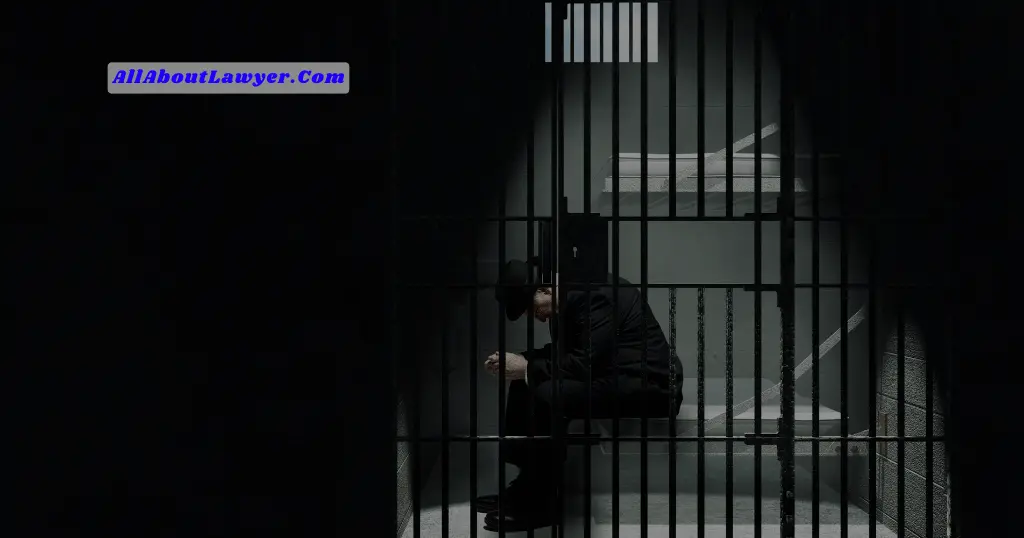How to Avoid Jail Time for a 4th DUI in California?
In California, avoiding jail time for a fourth DUI is challenging due to the state’s strict repeat offender laws, but it’s possible with the right legal strategy. Options like alternative sentencing, plea bargaining, and rehabilitation programs may help reduce or avoid incarceration.
In California, DUI statistics reveal a significant public safety issue, particularly concerning alcohol and drug-related incidents. In 2020, 1,159 people died in alcohol-impaired driving crashes, a stark 20% increase from 2019, which accounted for 30.1% of all traffic fatalities in the state Office of Traffic Safety. This upward trend in alcohol-related deaths has been consistent over the past decade, with the proportion of such fatalities increasing from 27.5% in 2011 Office of Traffic Safety.
Demographic data indicates that 80.4% of alcohol-impaired drivers involved in fatal crashes were men, with the 21 to 25 age group being the most affected Office of Traffic Safety. Additionally, drug-related driving fatalities have also surged, with 944 deaths recorded in 2020, representing a dramatic 71.6% increase since 2011 Office of Traffic Safety. These fatalities made up 24.5% of all motor vehicle deaths in California that year.
Table of Contents
Severity of a 4th DUI in California

What Does a 4th DUI Mean in California?
In California, a fourth DUI within 10 years is treated as a felony and comes with serious penalties. These penalties include mandatory jail time, steep fines, and a lengthy driver’s license suspension. The state sees repeat DUIs as a significant public safety risk, which is why the laws for a fourth DUI are strict and heavily enforced.
Related Articles For You:
How Many Times Can a DUI Case Be Postponed?
1800 DUI Away | Your Lifeline After a Drunk Driving Arrest
How to Avoid Jail Time for 3rd DUI in Ohio
Key Data Points:
- Primary Statistic: California mandates 16 months to 3 years in state prison for a fourth DUI within 10 years.
- Secondary Statistic: DUI offenders face license revocation for up to 4 years, as well as thousands of dollars in fines, fees, and court costs.
Core Message
For those facing a fourth DUI charge, a structured legal defense can make the difference between a lengthy prison sentence and an alternative arrangement, such as a treatment program. Understanding your options and taking action quickly is essential.
Options to Reduce or Avoid Jail Time for a 4th DUI in California
1. Pursue a Plea Bargain
One of the first strategies to consider is working with an attorney to negotiate a plea bargain. With strong representation, it may be possible to have the felony DUI charge reduced to a lesser charge, such as a misdemeanor or a “wet reckless” charge. Although this is rare, especially for a fourth offense, it can be possible if there are mitigating factors in your case.
Expert Insight: “Reducing a fourth DUI to a lesser charge is challenging but can be done under unique circumstances, such as procedural errors or lack of sufficient evidence,” explains DUI defense attorney Mark Rosen.
2. Enroll in a Court-Approved Rehabilitation Program
California courts may allow alternative sentencing for those who demonstrate a commitment to long-term rehabilitation. Options like inpatient treatment, intensive outpatient programs, and sober living homes can sometimes replace jail time. Judges are more likely to consider this option if you show a history of rehabilitation efforts and a willingness to comply with court-mandated programs.
Key Points for Alternative Sentencing:
- Residential Treatment Programs: Judges may approve inpatient programs in place of jail time for defendants committed to recovery.
- Long-Term Outpatient Treatment: Intensive outpatient programs are often recommended for those who have strong family support and a track record of compliance.
- Sober Living Facilities: These offer structured environments and are typically available to those who have completed an inpatient program.
Case Example: A California resident with multiple DUIs avoided prison by committing to a 12-month court-approved residential treatment program, showing the court a record of ongoing recovery efforts.
3. Demonstrate Mitigating Circumstances
Presenting mitigating circumstances is another strategy that can help reduce sentencing. Mitigating circumstances might include a lack of injury or property damage, completion of prior DUI programs, or evidence of a stable support system. Courts consider these factors when assessing the likelihood of rehabilitation and the risk posed to the community.
Examples of Mitigating Factors:
- No prior DUIs within the last five years.
- Active involvement in recovery programs or Alcoholics Anonymous (AA).
- Employment stability and family support.

Consider the SCRAM Program for Continuous Alcohol Monitoring
In some cases, California judges may allow defendants to avoid jail by participating in a SCRAM program (Secure Continuous Remote Alcohol Monitoring). This program monitors alcohol consumption and ensures sobriety compliance. Offenders wear an ankle bracelet that detects alcohol through perspiration, allowing courts to verify that the individual is abstaining from alcohol.
Success Story: A fourth-time DUI offender was able to reduce their sentence by participating in SCRAM monitoring and committing to weekly court check-ins, showing their commitment to sobriety and public safety.
Practical Applications and Examples
Example Case 1: Reduction of Charges with Strong Legal Representation
- Context: A driver facing a fourth DUI with no accidents or injuries.
- Obstacle: The risk of a mandatory prison sentence.
- Implementation: The attorney identified procedural errors in the arrest process and successfully argued for a plea to a lesser charge.
- Outcome: The felony was reduced to a misdemeanor, and the defendant served probation along with an intensive DUI program, avoiding jail time.
Example Case 2: Court-Approved Rehabilitation Program
- Scenario: A defendant with a history of substance abuse, but also a record of successful treatment in the past.
- Approach: With strong family support, they committed to a one-year residential treatment program.
- Execution: The court approved the program as an alternative to prison, with regular progress reports required.
- Results: The defendant completed the program and avoided jail time like 4th time, transitioning into a sober living home with court supervision.
Strategic Planning to Minimize Jail Time
1. Long-Term Commitment to Rehabilitation
Committing to a rehabilitation plan demonstrates a genuine desire for change. Courts often view offenders more favorably when they show a willingness to address underlying substance use issues.
- Build a Support Network: Enlist support from family, employers, or counselors who can vouch for your character and intentions.
- Engage in Community Service: Demonstrating good citizenship through community service can show the court that you’re working to make a positive impact.
4. Set Goals for Recovery and Compliance
Create realistic recovery goals, attend all required hearings and meetings, and consistently comply with court orders. Compliance can lead to favorable outcomes, as the court sees you as a low risk to reoffend.
Expert Insights on Avoiding Jail Time for a 4th DUI in California
Professional Advice: “Fourth DUI offenses in California carry serious consequences, but alternative sentencing is possible for those showing commitment to change,” says DUI attorney Lisa Turner. “Judges take a defendant’s history of rehabilitation seriously, so it’s crucial to start the process before the court mandates it.”
Field Insights: California’s strict DUI laws mean that every case is reviewed thoroughly, and defendants with a strong defense and a plan for sobriety have a better chance of avoiding jail.
Specialist Perspective: Counselors emphasize that sustainable recovery often includes a mix of support systems, lifestyle changes, and regular accountability, which courts consider favorably.
Quick Reference: Key Tips for Avoiding Jail Time
- Hire an Experienced DUI Attorney: A lawyer skilled in DUI defense can identify procedural errors and explore plea options.
- Commit to a Rehabilitation Program: Judges are more likely to consider alternatives to jail if there’s a clear commitment to treatment.
- Consider Alternative Monitoring Options: Programs like SCRAM provide evidence of sobriety and may reduce jail sentences.
- Demonstrate Good Behavior: Show the court that you are addressing underlying issues and taking responsibility.
Final Thoughts: Taking Control of Your 4th DUI Charge in California
A fourth DUI in California is a serious offense, with the potential for severe consequences. However, by proactively addressing your case and exploring alternative sentencing options, you may be able to avoid jail time. Seeking a skilled DUI attorney, demonstrating commitment to recovery, and actively participating in court-approved programs can all contribute to a more favorable outcome.
Taking control of the situation, prioritizing recovery, and building a strong support network can make a difference in court, helping to minimize the impact of a fourth DUI and focus on a path forward.
Read Also: Does a Dismissed DUI Affect Insurance? Here’s What You Need to Know!
FAQs: Common Questions About a 4th DUI in California
1. What is the typical sentence for a fourth DUI in California? A fourth DUI within 10 years is usually treated as a felony, with penalties including 16 months to 3 years in state prison, steep fines, and a 4-year license revocation.
2. Can I avoid jail time with a fourth DUI in California? Yes, alternative options exist, such as plea deals, court-approved rehabilitation, and SCRAM monitoring. However, these options depend heavily on the circumstances and strength of your defense.
3. What qualifies as mitigating circumstances in a DUI case? Mitigating factors may include lack of injury or property damage, prior participation in rehabilitation, and evidence of a stable family or employment situation.
4. How can SCRAM monitoring help in avoiding jail? SCRAM monitoring allows courts to verify sobriety through continuous alcohol testing, which can serve as an alternative to jail time, especially for those showing dedication to recovery.
About the Author

Sarah Klein, JD, is a former criminal defense attorney with hands-on experience in cases involving DUIs, petty theft, assault, and false accusations. Through All About Lawyer, she now helps readers understand their legal rights, the criminal justice process, and how to protect themselves when facing charges.
Read more about Sarah
